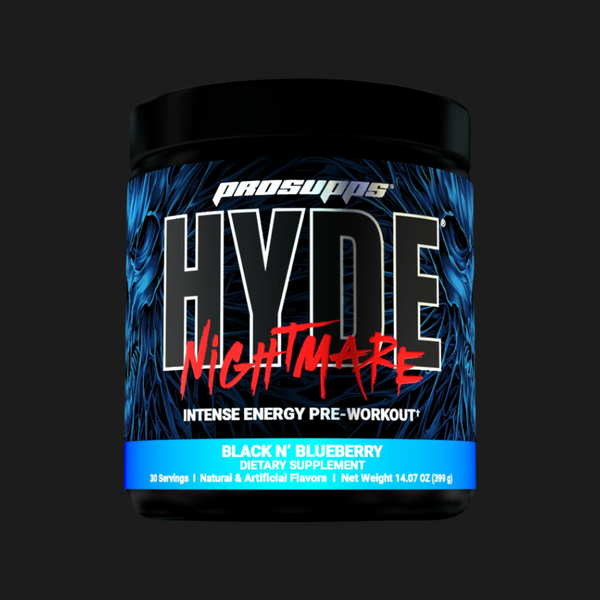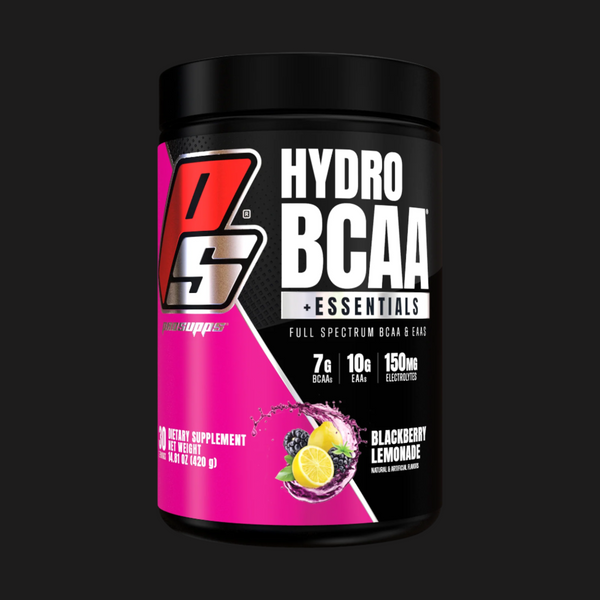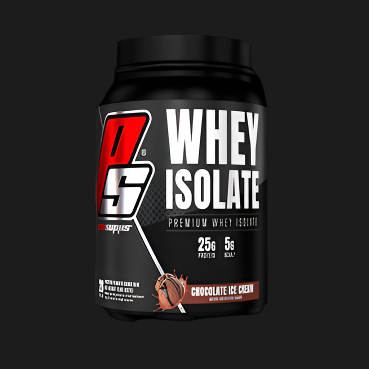
30 Days to Fit: Diet Plan
 Written by Guy Gustafson
Written by Guy Gustafson May 21, 2020
By Thoren Bradley
So, here we are, quarantine is almost behind us and we’re guessing if you’re anything like the rest of us, you ate less than perfect when locked up at home. Totally worth it. The good news? We’ve got time. No fad diets, no demonizing specific macronutrients, no B.S. Just good, clean and consistent eating in a deficit. You’re welcome to go snag your “before” picture now, we’ll wait. If you’re starting this 30-day diet plan today, let us know by tagging us on Instagram or Facebook!
Below is a diet plan example (including macronutrients) that I would give an individual who is specifically shooting for 1500 calories in a day
| Breakfast #1 | Protein | Carbohydrates | Fat | Calories |
| Coffee/Tea (with zero calorie sweeteners) | – | – | – | – |
| 5 Egg Whites | 18 | 0 | <1 | 86 |
| 1 Large Whole Egg | 5–7 | 0 | 5 | 72 |
| 1/3 Cup Uncooked Oatmeal (can replace with a slice of Dave's Killer toast if preferred) | 4 | 18 | 1 | 102 |
| Snack #1 | Protein | Carbohydrates | Fat | Calories |
| 1.5 TBSP Almond Butter | 5 | 6 | 12 | 142 |
| 1 Toasted Slice of Dave's Killer Whole Wheat Bread | 3 | 13 | 1 | 70 |
| 1/2 Cup of Blueberries | >1 | 10 | 0 | 42 |
| Lunch #1 | Protein | Carbohydrates | Fat | Calories |
| 3 oz Ground Chicken Breast (or 99/1 Ground Turkey) | 25 | 0 | 2 | 140 |
| 1/2 Cup Cooked White Rice | - | - | - | |
| 3 Cups of Leafy Greens (your favorite) | – | – | – | – |
| 1/4 of an Avocado | 0 | 1.5 | 5 | 45 |
| Snack #2 | Protein | Carbohydrates | Fat | Calories |
| 3 oz Ground Chicken(or preferred white meat) | 25 | 0 | 2 | 140 |
| 5 oz Sweet Potato (or 1 5" long sweet potato) | 2 | 26 | <1 | 112 |
| 1 Cup of Steamed Veggies | 3–5 | 6–8 | 0 | 35–45 |
| Spray Butter | – | – | – | – |
| Dinner #1 | Protein | Carbohydrates | Fat | Calories |
| Extra Lean Ground Beef (96%) (oe 97% Ground Turkey) | 24 | 0 | 4.5 | 140 |
| 1/2 Cup Cooked White Jasmine Rice | 2 | 22 | 0 | 102 |
| Hot Sauce | – | – | – | – |
| Green Onions | – | – | – | – |
| Post-Workout Meal | Protein | Carbohydrates | Fat | Calories |
| 1 Scoop ProSupps Whey Protein | 24 | 3 | 2.5 | 130 |
| Rice Cakes (Chocolate) | 2 | 24 | 2 | 120 |
| Totals | Protein | Carbohydrates | Fat | Calories |
| 144 | 151.5 | 31 | 1585 |
Notes: Some important tricks I use to keep my calories low/ but my moral high
Zero Calorie Drinks Although the debate of the health of artificial sweeteners may wear on for decades…I’ll save you the stress now, moderation will ultimately always be the resulting answer. If having zero calorie drinks to turn to helps you stay away from their sugar-loaded counterparts, your body composition will thank you tremendously.
Condiment Replacements: Yes, you can blow your whole deficit with one heavy salad dressing choice. But, I don’t want you to panic. There are plenty of zero calorie condiments out there. Hot sauces, butter, mustard and reduced sugar ketchup are my go-to choices.
Cooking Spray: I know how irresistible a pan full of olive oil can be…but we are in cutting season guys!! I definitely advocate using some cooking spray since it’ll keep you from blowing your deficit before you’ve even picked up a fork. Spray the pan, save the calories.
Weekly Grocery List
- 2 pints of Blueberries
- 2 bags of Mixed Greens
- 1 container of Quaker Chocolate Rice Cakes
- 1 small container of Almond Butter (natural peanut butter fine if you trust you can avoid binging the whole jar)
- 1 pound Extra Lean Ground Beef (96% or leaner)
- 2 pounds Ground Chicken Breast (or Turkey Breast)
- 5 small to medium sized Sweet Potatoes
- 1 small bag of uncooked Jasmine White Rice
- 2 medium avocados
- Spray Butter
- Pam Non-Stick Spray to reduce oil use
- 1 bag Frozen Mixed Veggies (any preference as long as it contains more than simply corn)
- 1 loaf of Dave's Killer Bread
- 2 18 cartons of eggs
What’s the deal with all this “Macros” talk and what about calories?
Carbohydrates, proteins and fat. In short, by counting our protein and carbs (4 calories per gram) and our fat (9 calories per gram) we are essentially also tracking our calories. Why not just count calories? In a nutshell, each macronutrient serves a vital purpose for building tissues, providing quality energy, hormone balance and even the simple preservation of proteins in the body that have already been created. If we aren’t at least aware of the general ratios of macronutrients in our daily intake, it’s going to be a whole hell of a lot harder to preserve lean body mass during a cut. I’m guessing your goal isn’t just to watch the number on the scale drop, but also have some lean muscle left as well.
Look, it’s tough in this day and age to stay the course when it comes to weight loss. Every day a new diet that promises results by excluding an entire food group or maybe an entire macronutrient. But let’s air this out now, we are both equipped and setup physiologically to handle a wide variety of foods. Setting yourself up to ignore an entire food group is a dead end at best. Carbs exist, they are all around us (thank the heavens), and setting ourselves up to perform with them as a part of our daily intake will only serve you fruitfully (pun not intended) in the long term. Don’t let the modern era of carb fears steer you from using them to fuel better workouts and a leaner physique. Unless someone is completely sedentary, I always keep healthy and clean carbs in the picture during a weight loss journey. The presence of carbs fuel higher intensity workout sessions and are likely the most underrated tool for recovery. Carbs also do a great job in sparing those precious grams of protein we need, to maintain the tissue we already have.
40-40-20 and Where I got the numbers from the plan above?
In this plan about 40% of our calories our going to come from carbohydrates and protein, while around 20% is going to come from fat.
Study after study has shown that weight loss is never contingent upon the ratios of carbohydrates and fats, it seems longitudinally that we still see similar results despite the macronutrient ratios. However, we have more in this picture than simple weight loss. I’m guessing you’d also like to improve the lean mass and composition of your body while you lose the weight. That’s why I always recommend using the ratio 40-40-20 as a baseline. Despite our traditional thoughts of protein as a tool for gaining size, I keep protein relatively higher during a cut to preserve muscle. If someone is highly active I may push the carbs a little closer to 50% and if they are less active I may drop them lower than 40%. The assumption in this meal plan above is that the individual is exercising in a structured way around 3-5 times a week.
How NEAT is that?
I’m sure you’ve heard the phrase “you can’t out train a poor diet”. And while true, I’ll give you a great trick to speed up the process of leaning out. Non-Exercise Activity Thermogenesis. It cannot be overstated how important it is to have a great workout with good intensity in the gym, but that’s only around 5% of your day. There are 23 other hours in a day and if you can be active in other ways (mow the lawn, walk the dogs, go for a leisurely swim, shovel snow etc.) you will see a huge jump in thermogenesis and daily caloric expenditure. I always lean out way better in the summer, because I am so much more active (aside from the gym) and my body is getting so much more of a metabolic imprint from all of the movement.
What’s the deal with intermittent fasting? Does it work?
Some people find themselves struggling with knowing how much to eat and relying on your appetite to dictate when and how much can be a slippery slope. SO intermittent fasting provides people with the rigidity of a “window” of time to eat (say 4pm-10pm), and while they typically eat a large number of calories in this window….it is very satiable to eat in a smaller window. The result? A deficit. This caloric deficit is going to result in weight loss. Any benefits of insulin sensitivity, mental acuity or convenience can surely be attained through the structure of following a good solid eating plan. But if you must fast, go ahead and condense the eating plan into a smaller amount of time and use it as a guide to ensure you still don’t exceed your caloric goal.
Carb Cycling
Some workouts are harder than others, some days less active. The idea of cycling carbohydrates is the idea of using a larger amount of carbohydrates to fuel the days where performance in the gym (or maybe on a field) may feel better with a fuller tank (glycogen stores) and possibly lightening up the carbs on less active rest days. If you eat 150 carbs a day, that totals out to 1050 grams per week. If you carb cycle, you’ll likely still aim for that weekly goal and just change how you disperse it. For example,
| Day | Carbs |
| Monday | 250 grams (heavy workout day) |
| Tuesday | 200 grams |
| Wednesday | 150 grams |
| Thursday | 250 grams (heavy workout day) |
| Friday | 100 grams |
| Saturday | 50 grams |
| Sunday | 50 grams |
| Total | STILL 1050 grams |
I think we are starting to see a trend with all of these methods. If you look closely, you’ll see they all share a few common (and critical) details. A caloric deficit and macronutrient balance! And now you’ve got that, so if you want to use other methods just make sure that you use the skeleton of your calories and macronutrients to keep structure.
Are macronutrients really the only thing that matters?
If it fits your macros, you’re all good? Maybe not. You need micronutrients too! How? Just like you were told all through your childhood, you’ll want to eat your veggies and fruits (and the occasional mollusk). So much so, that I’ll tell people to not even bother counting it in their macros for the day if it’s a leafy green vegetable. I’ve seen people feel and even notice major differences in their performance by simply incorporating more micronutrient dense foods. Hormone production, digestive efficiency and fluid balance are just a few things that we notice improve with the incorporation of these nutrient dense foods. So…don’t skimp on the veggies!
Now what? Finding your own way
So, you lost the weight. Now you feel awesome, but you want to start growing some more muscle again. You’ll need to find your New basal metabolic rate and your new caloric needs. Once you know your new caloric goal, you’ll start your macronutrient guidelines by finding how much protein to eat.
Finding your protein requirement needs to be based on your Lean Body Mass, not your total weight. Around 2.2 grams of protein per kilogram of LEAN body mass.
So, if you weigh 95 kgs with 15 percent body fat you have around 80 kg of Lean Body Mass (95x.85= 80) Take that LBM number and multiply it by that magic number 2.2. Which lands you at around 175 grams of protein a day (or 700 calories). Fill in the rest of your macros to reach your caloric needs for the day. And if you’re lost, remember that 40-40-20 rule to start. Adjust your carbs and fats until you find a zone where you feel your best, but try to keep protein relatively steady.
GET LEAN
 Why You're Struggling
Can't Lean Out? Here's Why You're Struggling
Why You're Struggling
Can't Lean Out? Here's Why You're Struggling
We all know the feeling. You’ve been working hard in the gym, sticking to your diet and getting in your...
 Weight Loss
Choosing the Best Protein Powder for Weight Loss
Weight Loss
Choosing the Best Protein Powder for Weight Loss
Struggling to shed body fat and lean out? You might need to focus more on your nutrition, specifically your protein...
 Weight Loss
9 Ways to Speed Up Your Weight Loss and Burn More Fat
Weight Loss
9 Ways to Speed Up Your Weight Loss and Burn More Fat
Weight loss is a major goal for more than 40 percent of Americans. Is it something you’re working toward, too?
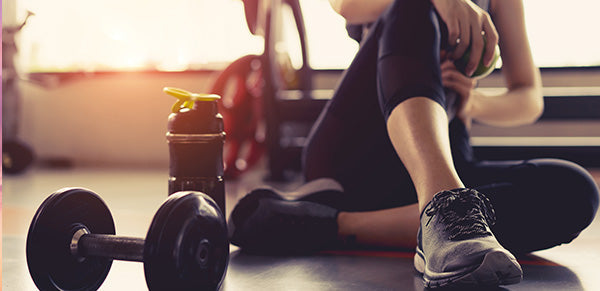 Workout Routine
10 Tips for Building a Sustainable Workout Routine
Workout Routine
10 Tips for Building a Sustainable Workout Routine
Starting a fitness journey is an exciting time, but maintaining a sustainable workout routine can be challenging. From setting realistic...





